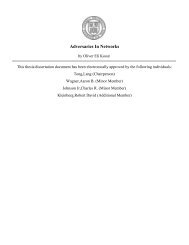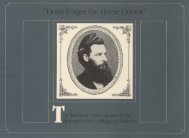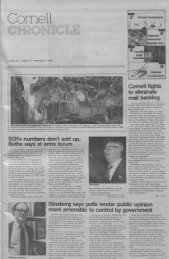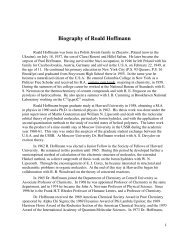Preliminary pages FINAL.pdf - eCommons@Cornell - Cornell ...
Preliminary pages FINAL.pdf - eCommons@Cornell - Cornell ...
Preliminary pages FINAL.pdf - eCommons@Cornell - Cornell ...
Create successful ePaper yourself
Turn your PDF publications into a flip-book with our unique Google optimized e-Paper software.
THE SUBSTANCE OF STYLE<br />
HOW SINGING CREATES SOUND IN LIEDER RECORDINGS, 1902-1939<br />
Rebecca Mara Plack, Ph. D.<br />
<strong>Cornell</strong> University 2008<br />
In this dissertation, I examine the relationship between vocal technique and<br />
performance style through 165 audio clips of early Lieder recordings. I proceed from<br />
the starting point that many stylistic gestures are in fact grounded in a singer’s habitual<br />
vocalism. Vibrato, tempo and rubato are directly affected by a singer’s voice type and<br />
his physical condition, and portamento has long been a technical term as well as a<br />
stylistic one. If we consider these technical underpinnings of style, we are inevitably<br />
moved to ask: how do a singer’s vocal habits affect what we perceive to be his style?<br />
Does a singer’s habitual vocalism result in his being more likely to make certain style<br />
gestures, or even unable to make others?<br />
To address these questions, I begin by defining a vocabulary that draws on<br />
three sources: the language of vocal pedagogy, data derived from voice science, and<br />
evidence drawn from recordings themselves. In the process, I also consider how some<br />
Lieder singers distorted the word “technique,” using it to signify emotional<br />
detachment. Next, I examine the ways in which a recording represents the performer,<br />
addressing how singers are affected by both changing aesthetics and the aging process;<br />
both of these lead to a discussion of how consistently some performers make certain<br />
stylistic gestures throughout their recordings. Finally, I offer a case study based on<br />
Schubert’s song “Die Forelle” which suggests a clear link between voice type, gender<br />
and style.
















